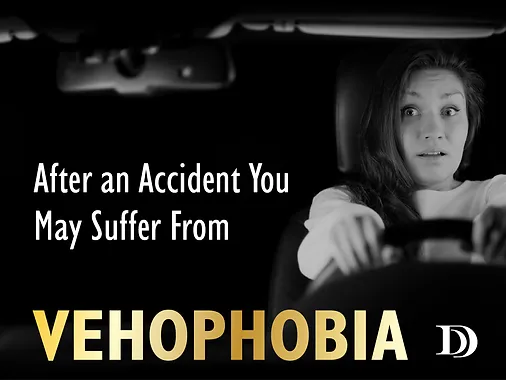Car accidents can be traumatic experiences that can lead to lasting emotional effects, including vehophobia. If you are experiencing fear and anxiety because of a car accident, it is important to seek treatment. There are several resources available to help, including therapy, support groups, and medication. It is important to address these feelings and work through them to overcome the fear and regain confidence in driving. Seeking support from a mental health professional can improve your chances of making a full recovery.
About Vehophobia
Vehophobia, which originates from the Latin word “veho” meaning to drive, is a serious condition that can occur after a traumatic event such as a car accident, regardless of whether the person sustained injuries. The phobia is classified as a form of PTSD, which is a disorder triggered by stimuli that remind the individual of the traumatic event. Triggers can differ from individuals and there is no one specific trigger that affects all individuals with vehophobia.
Here are a few common triggers of the phobia
‘The fear of getting into another accident
The idea of driving causing intense anxiety
Panic Attacks operating a vehicle
The fear of harming others
Treatments for vehophobia can include therapy, medication, exposure therapy, or a combination of these methods. Therapy, such as cognitive-behavioral therapy, can help individuals change the way they think and feel about driving. Medications, such as anti-anxiety or anti-depressant drugs, may be prescribed to help manage symptoms.
Exposure therapy involves gradually exposing the person to driving-related situations, such as riding in a car, until they become less fearful.
Possible Treatments for Vehophobia
Psychotherapy
This is probably the most common way to handle vehophobia without medication. There are two separate forms of this treatment, one of which being cognitive, and the other being behavioral.
Behavioral
Behavioral therapy focuses on reducing problematic actions that are affected by feeling. This type of therapy may include breathing exercise, teaching individuals not to avoid certain roads out of fear, or any obsessive behavior that is limiting them because of the phobia.
Cognitive
Hypnotherapy
Hypnotherapy or hypnosis uses guided relaxation, concentration, and extreme attention to help a person process their thoughts. This type of therapy can be used in tandem with psychotherapy. It allows a person to face their issues head-on.
Medication
Medication can help reduce traumatic anxiety, although this is not the first method of choice by most specialists. A lot of times, this type of treatment is recommended for those in the beginning phases of their therapy journey as a temporary and non-permanent fix.
Why you may need an accident attorney if you suffer from vehophobia



